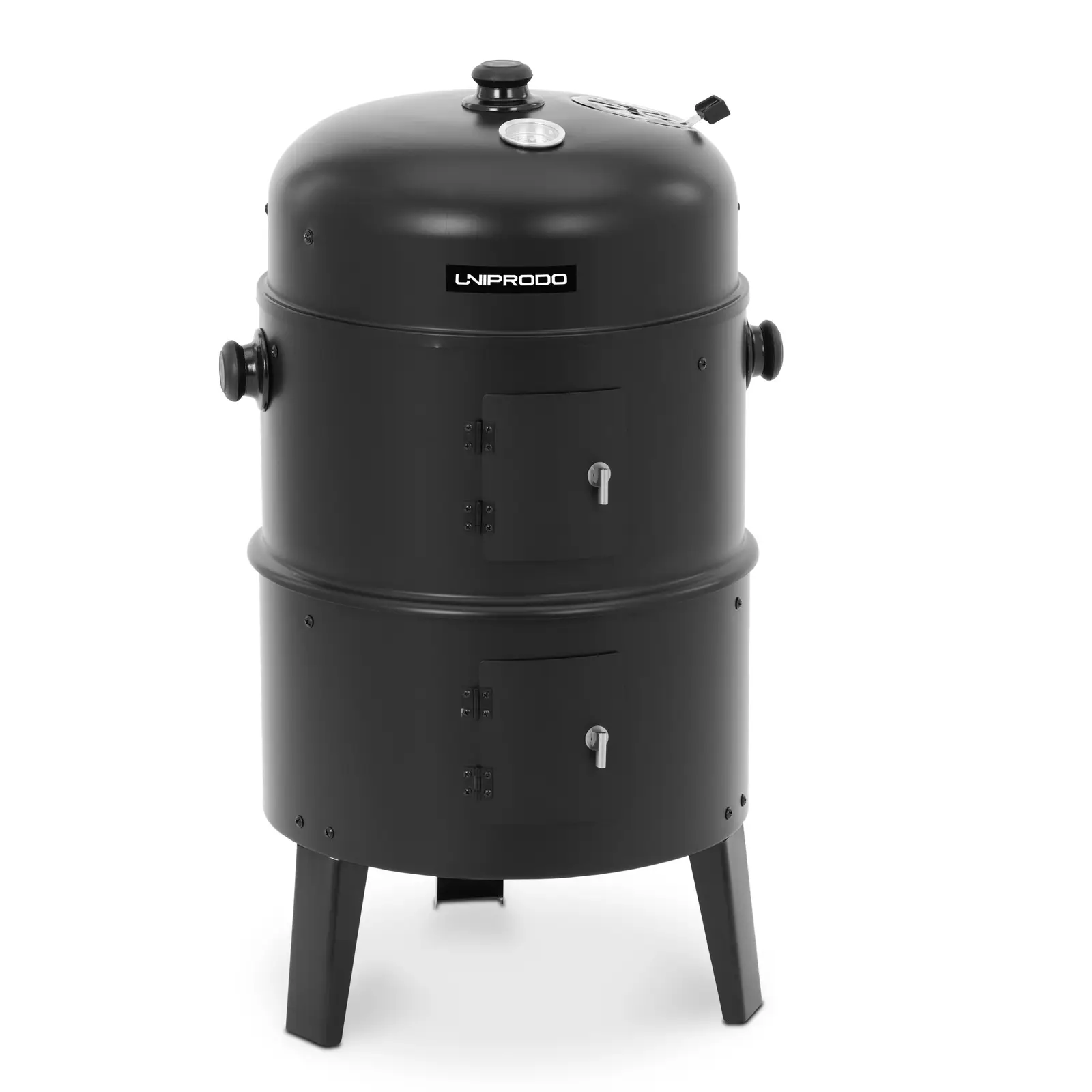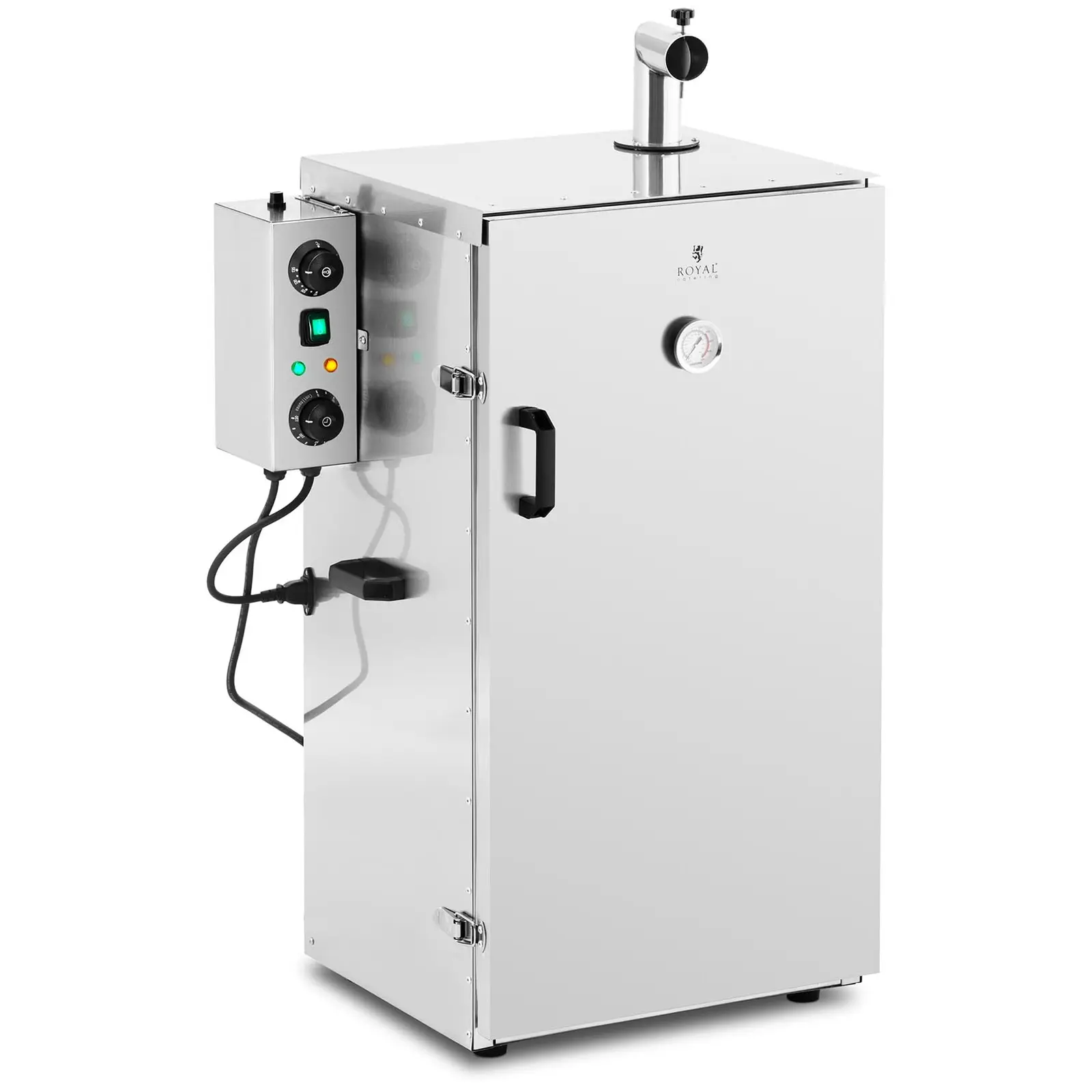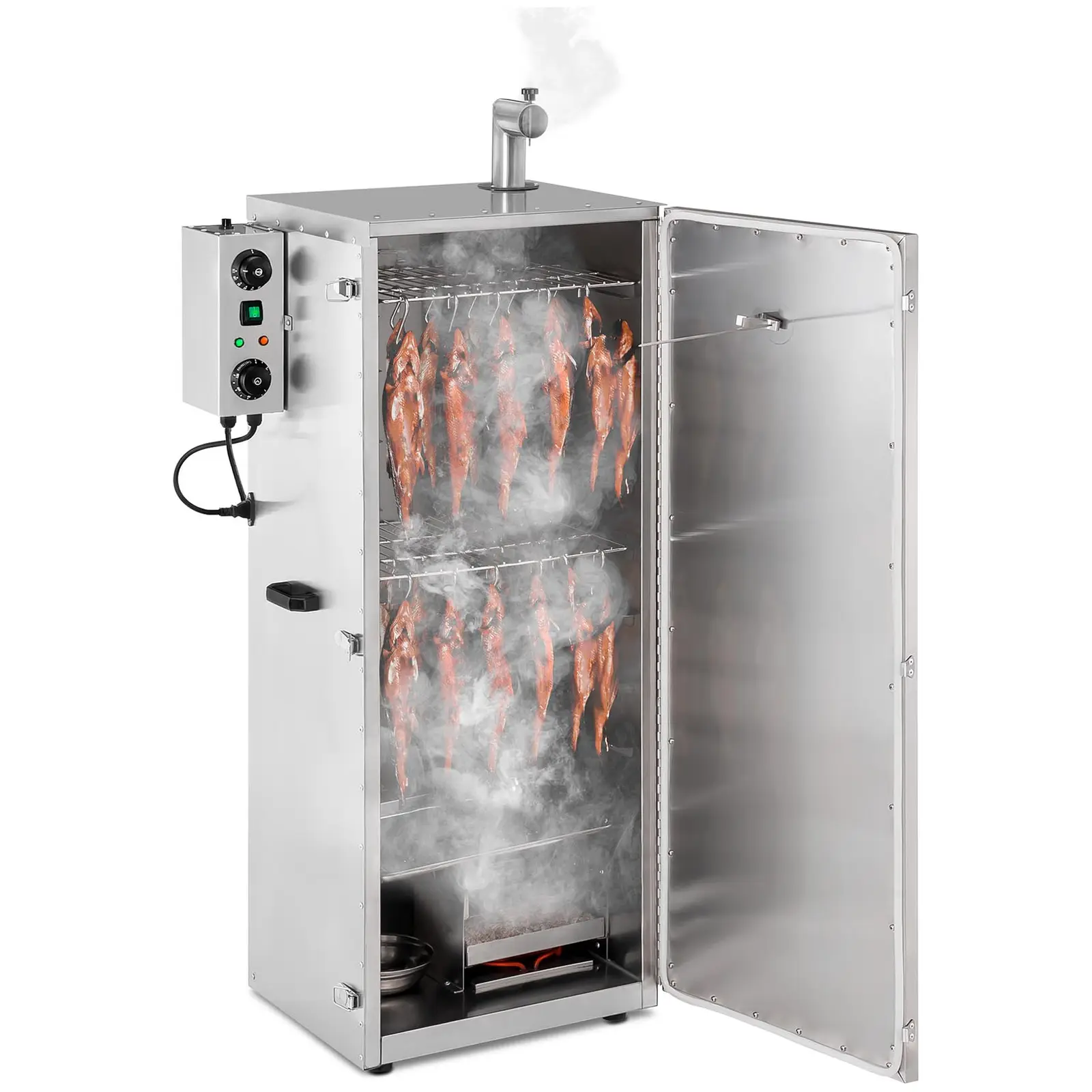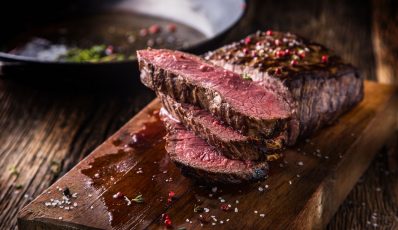Making your own smoked ham will allow you to enjoy its unique aroma and taste that you won't find in any store! Smoking ham is an art that, over time, can become your passion and a way to make healthy, homemade meats without unnecessary additives. In this comprehensive guide, we'll show you how to prepare, steam, and smoke ham. Whether you're a novice or an experienced chef, our tips and tricks will make your ham taste exceptional!

Making your own smoked ham will allow you to enjoy its unique aroma and taste that you won’t find in any store! Smoking ham is an art that, over time, can become your passion and a way to make healthy, homemade meats without unnecessary additives. In this comprehensive guide, we’ll show you how to prepare, steam, and smoke ham. Whether you’re a novice or an experienced chef, our tips and tricks will make your ham taste exceptional!
How to choose a good ham for smoking?
A key element of any successful smoking process is selecting the right meat. The quality of the product directly translates into the taste and aroma of the finished meat. Fatty and juicy pieces of ham from a pig’s hind legs are ideal for smoking; as after the process they become extremely aromatic and delicate.
- Selection of meat – The most popular and frequently chosen part of the carcass is the so-called leg. This is a part of the meat from the hind legs that contains the right amount of fat, which is crucial for maintaining the juiciness of the meat.
- Buying meat – Ideally, you can purchase meat from a reliable supplier or local butcher who can confirm that the animal was raised in good condition and fed with natural ingredients. Organic or free-range meat is usually of higher quality and tastes better.
- Meat quality assessment – Before purchasing, check whether the meat is firm and has evenly distributed fat. Avoid meat that is dry, has an unpleasant smell, or is pale in color.
- Preparation before smoking – After purchasing, the meat should be properly prepared. This includes removing excess fat and membranes that could affect the flavor and texture of the smoked ham.
Choosing the right meat is the first step to creating the perfect smoked ham that will delight your guests. Good quality meat is a guarantee of success in the further stages of smoking.
Preparing ham for smoking
Preparing ham for smoking is crucial to achieve optimal taste and texture of the finished meat.
Meat cleaning:
- Start by washing the ham thoroughly under running water.
- Remove any excess membranes and unnecessary fat, but keep enough of it so that the meat remains juicy while smoking.
Brine preparation:
- Brine is a solution of salt, water, and often sugar and spices that is used to saturate meat before smoking. (We will give you the recipe for brine for smoked ham in the next part of the article)
- Soak the ham in brine and store it in a cool place for 24-72 hours, depending on the size and thickness of the cut of meat.
Steaming the ham:
- Steaming the ham before smoking is an optional but helpful step that can help stabilize the meat’s texture and increase its juiciness. This process requires precise temperature and time control:
- Heat the water to about 70-80 degrees Celsius. This is the perfect temperature for the meat to become soft and juicy.
- Place the ham in hot water, maintaining the specified temperature. The steaming time depends on the size and thickness of the meat but is usually between 20 and 30 minutes.
- It is important to monitor the internal temperature of the meat while steaming. The optimal temperature is around 60-65 degrees Celsius. Maintaining this temperature will ensure that the meat is properly prepared for the smoking process, maintaining its structure and moisture.
Drying before smoking:
- After removing the ham from the brine and/or finishing steaming, it is important to air-dry the meat well.
- Leave the ham in a cool, airy place for a few hours so that its surface becomes slightly sticky. This helps the smoke stick better to the meat while smoking.
Brine for smoked ham
Brining ham is necessary to achieve the appropriate consistency, taste and to extend the shelf life of the meat. This can be done in two ways: by dry method or using brine. Brine is more commonly used because of its effectiveness in even distribution of salt throughout the meat.
Ham brine recipe:
Ingredients:
- 4 liters of water,
- 350 g pickling salt,
- 150 g of sugar (you can use white or brown),
- 8 cloves of garlic, pressed or finely chopped,
- 15 g peppercorns (black or mixed),
- 4 bay leaves,
- Optional: sprigs of fresh herbs such as thyme or rosemary, a few juniper seeds, and slices of fresh ginger.
How to prepare the brine for ham?
- Boil water with salt and sugar in a large pot. Stir until the ingredients are completely dissolved.
- Remove the pot from the heat.
- Add garlic, pepper, bay leaves, and additional herbs and spices to the hot water.
- Allow the mixture to cool to room temperature. The spices will release their aromas during this time.
- Before using, the brine should be chilled in the refrigerator so that it is cold before dipping the meat into it.
- Place the ham in a large enough pot or curing bag. Pour the prepared and cooled brine over the meat, making sure it is completely submerged.
- Store in the refrigerator for 24 to 72 hours, depending on the size of the cut of meat and your preferred flavor intensity.
- Once the salting process is complete, remove the ham from the brine and rinse well under running water.
- Dry the meat and allow it to “rest” before smoking to allow the flavors to stabilize.
Salting the ham is a key stage that determines the final taste and texture of the meat. Thanks to the brine, the meat is properly prepared for further stages of smoking and also gains durability and taste.
Smoking ham step-by-step
Smoking ham is a process that requires patience and precision, but in return you will get tasty and aromatic meat. Here’s how you can do this process step by step to achieve the best results.
Smoker preparation:
- Make sure your smoker is clean and ready to use. All surfaces that will come into contact with meat should be sterile to avoid contamination.
- Choose the right wood for smoking – traditionally beech, oak, or apple wood is used for ham, which gives it a delicate but characteristic aroma.
Smoking temperature and time:
- Start smoking at a low temperature, around 60-70°C. This is crucial for cooking meat evenly and for achieving the right texture.
- The total smoking time of the ham depends on its size and thickness but is usually between 6 and 12 hours. Large hams may require an even longer time.
Process monitoring:
- Check the temperature in the smokehouse regularly with a thermometer. It is important to keep it at an even level throughout the smoking process.
- Also control the humidity in the smokehouse, which should be around 60-70%. If necessary, you can add a pot of water to the smoker to increase the humidity.
Turning and moistening the ham:
- Turn the ham every few hours while smoking to ensure even exposure to smoke.
- To keep the meat juicy, you can also spray it with a mixture of water and apple cider vinegar. This helps maintain the appropriate moisture level in the meat.
Checking the temperature of the ham:
- The ham is ready when its internal temperature reaches 68-72°C. You can check this with a meat thermometer.
- Once this temperature is reached, remove the ham from the smoker and allow it to “rest” for at least 20-30 minutes before slicing. This will ensure that the juices are distributed evenly, which will improve the texture and flavor of the meat.
Cooling and storage:
- After smoking and resting, the ham can be cooled in the refrigerator before further storage or serving.
- Smoked ham should be stored in the refrigerator and eaten within a few days unless you plan to freeze it.
Smoking ham is a process that may seem complicated, but with proper preparation and attention to detail, it is worth it. It’s worth experimenting with different types of wood and smoking techniques to find your favorite flavor combinations.
How to smoke ham? – the most common problems and how to solve them
Uneven smoking
- Problem: The meat has uneven tones or the smoke flavor is too strong in some places.
- Solution: Make sure the ham is properly placed in the smoker, allowing the smoke to flow freely around the entire piece. Turn the ham regularly while smoking to ensure even access of smoke to the meat.
Smoked ham is too dry
- Problem: The ham is too dry and hard after smoking.
- Solution: Control the humidity in the smoker. You can place a vessel with water to increase the air humidity. Also, check that the ham is not smoked for too long or at a too high temperature.
Unpleasant aftertaste
- Problem: Smoked ham has a bitter or unpleasant aftertaste.
- Solution: Make sure you use the right wood for smoking. Some types of wood, such as softwoods, can impart undesirable flavors to meat. Always choose hardwoods such as oak, beech, or apple.
Problems with achieving the appropriate internal temperature of the meat
- Problem: Difficulty achieving the recommended internal temperature of the meat.
- Solution: Use a reliable meat thermometer to regularly monitor internal temperature. Make sure the smoker maintains a constant, appropriate temperature throughout the smoking process.
Too much smoke
- Problem: The ham has too intense, smoky flavor that dominates the other flavor notes.
- Solution: Regulate the amount of wood and the duration of burning. Too much smoke can be overwhelming, so it is important that the smoke is subtle and evenly distributed.
Problems with steaming meat before smoking
- Problem: The ham is too hard or rubbery.
- Solution: Make sure that the steaming temperature is low enough (does not exceed 80°C) and the time is adjusted to the size of the ham. A temperature that’s too high or steaming that lasts for too long may cause the meat to harden.
Solving these problems will help you obtain perfectly smoked ham, which will be tasty, but more importantly – safe to eat. It’s worth experimenting and adapting techniques depending on your preferences and the equipment you have.










Share